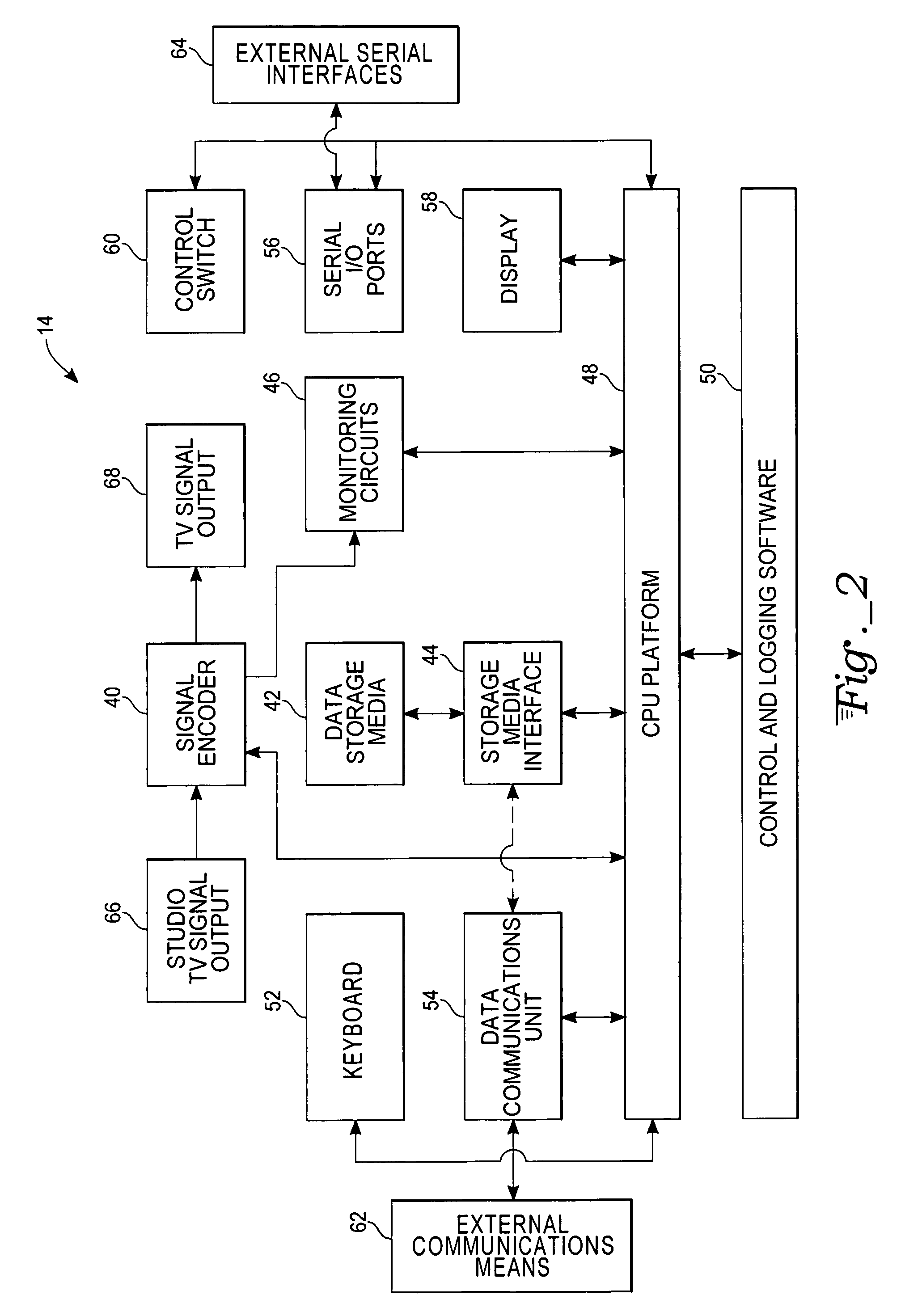Apparatus and method for insertion of material in broadcasting
- Summary
- Abstract
- Description
- Claims
- Application Information
AI Technical Summary
Benefits of technology
Problems solved by technology
Method used
Image
Examples
Embodiment Construction
[0046]The present invention will now be disclosed with reference to a functional block diagram of an exemplary broadcast system of FIG. 1. It is well understood that such a system of the present design may apply to any audio, video or multimedia broadcast system as is known in the art. Such systems include, but are not limited to, conventional television, digital television, high-definition television (“HDTV”), radio, digital audio radio, or any similar multimedia broadcast system. The invention may also be extended to any compressed or encrypted multimedia broadcast systems without inventive faculty. For illustrative purposes only, an standard television embodiment is described in the detailed description. The example used is only provided to enable any person skilled in the art to make or use the present invention. Thus, the present invention is not intended to be limited to the embodiments shown herein, but is to be accorded the widest scope consistent with the claims herein.
[004...
PUM
 Login to View More
Login to View More Abstract
Description
Claims
Application Information
 Login to View More
Login to View More - R&D
- Intellectual Property
- Life Sciences
- Materials
- Tech Scout
- Unparalleled Data Quality
- Higher Quality Content
- 60% Fewer Hallucinations
Browse by: Latest US Patents, China's latest patents, Technical Efficacy Thesaurus, Application Domain, Technology Topic, Popular Technical Reports.
© 2025 PatSnap. All rights reserved.Legal|Privacy policy|Modern Slavery Act Transparency Statement|Sitemap|About US| Contact US: help@patsnap.com



